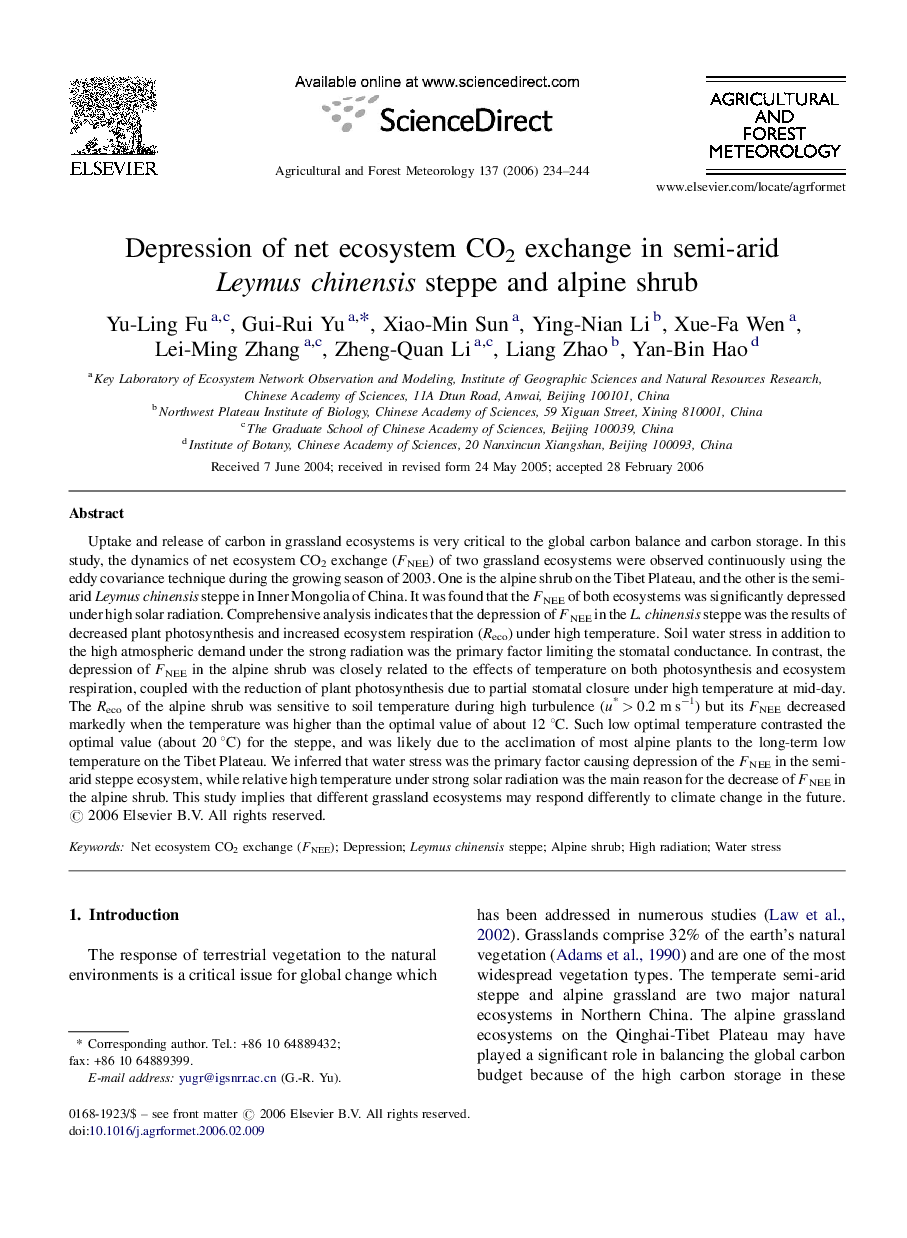| کد مقاله | کد نشریه | سال انتشار | مقاله انگلیسی | نسخه تمام متن |
|---|---|---|---|---|
| 83045 | 158440 | 2006 | 11 صفحه PDF | دانلود رایگان |

Uptake and release of carbon in grassland ecosystems is very critical to the global carbon balance and carbon storage. In this study, the dynamics of net ecosystem CO2 exchange (FNEE) of two grassland ecosystems were observed continuously using the eddy covariance technique during the growing season of 2003. One is the alpine shrub on the Tibet Plateau, and the other is the semi-arid Leymus chinensis steppe in Inner Mongolia of China. It was found that the FNEE of both ecosystems was significantly depressed under high solar radiation. Comprehensive analysis indicates that the depression of FNEE in the L. chinensis steppe was the results of decreased plant photosynthesis and increased ecosystem respiration (Reco) under high temperature. Soil water stress in addition to the high atmospheric demand under the strong radiation was the primary factor limiting the stomatal conductance. In contrast, the depression of FNEE in the alpine shrub was closely related to the effects of temperature on both photosynthesis and ecosystem respiration, coupled with the reduction of plant photosynthesis due to partial stomatal closure under high temperature at mid-day. The Reco of the alpine shrub was sensitive to soil temperature during high turbulence (u* > 0.2 m s−1) but its FNEE decreased markedly when the temperature was higher than the optimal value of about 12 °C. Such low optimal temperature contrasted the optimal value (about 20 °C) for the steppe, and was likely due to the acclimation of most alpine plants to the long-term low temperature on the Tibet Plateau. We inferred that water stress was the primary factor causing depression of the FNEE in the semi-arid steppe ecosystem, while relative high temperature under strong solar radiation was the main reason for the decrease of FNEE in the alpine shrub. This study implies that different grassland ecosystems may respond differently to climate change in the future.
Journal: Agricultural and Forest Meteorology - Volume 137, Issues 3–4, 14 April 2006, Pages 234–244